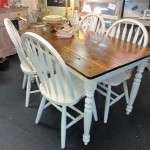Antique Marble Top End Tables: A Guide to History, Value, and Restoration
Antique marble top end tables are captivating pieces that exude opulence and timeless beauty. Their elegant designs and intricate details have adorned homes and palaces for centuries, making them highly sought-after collectibles. Understanding the history, value, and proper restoration techniques of these exquisite tables is essential for both collectors and enthusiasts.
Origins and History
The use of marble in furniture dates back to ancient civilizations like Greece and Rome. Marble, a metamorphic rock composed primarily of calcite, was prized for its durability, beauty, and ability to convey wealth and status. Marble top end tables became particularly popular during the Renaissance and Baroque periods, where they were often adorned with elaborate carvings and gilded details.
Styles and Designs
Antique marble top end tables come in a variety of styles, each reflecting the prevailing design trends of their respective eras. Some notable styles include:
- Renaissance: Characterized by intricate carvings, turned legs, and often inlaid with semi-precious stones or tortoiseshell.
- Baroque: Known for their exaggerated curves, ornate carvings, and heavy gilding.
- Neoclassical: Inspired by ancient Greek and Roman designs, featuring clean lines, fluted columns, and restrained ornamentation.
Value and Appraisal
The value of antique marble top end tables varies greatly depending on several factors, including age, rarity, condition, and provenance. Factors that enhance value include:
- Age: Older tables, particularly those dating back to the Renaissance or Baroque periods, tend to be more valuable.
- Rarity: Tables with unique designs or provenance, such as those commissioned by royal families or renowned artisans, fetch higher prices.
- Condition: Well-preserved tables with minimal damage are more valuable than those requiring extensive restoration.
- Provenance: A documented history or attribution to a specific maker or period can significantly increase value.
Restoration and Care
Antique marble top end tables require careful handling and proper restoration techniques to preserve their beauty and value. Marble is a delicate material that can be easily damaged by improper cleaning or repairs. When restoring a marble table, it is crucial to seek the advice of a professional conservator or skilled craftsperson.
- Cleaning: Use only mild soap and water to clean the marble surface. Avoid harsh chemicals or abrasive cleaners.
- Stains: Consult a professional for stain removal as improper treatments can damage the marble.
- Repairs: Broken or chipped marble can be repaired by skilled artisans using techniques such as epoxy resin or marble dust bonding.
- Polishing: Over time, marble may lose its shine. A professional can polish the surface to restore its original luster.
Conclusion
Antique marble top end tables are exquisite pieces of furniture that have graced homes and collections for centuries. Their beauty, historical significance, and potential value make them worthy of careful preservation and appreciation. Understanding the history, value, and restoration techniques of these tables is essential for informed collecting and the preservation of our cultural heritage.

Antique Marble Top Side Table Walnut W White Nice
Round Table With Marble Top Rf Architectural Garden Antiques

Antique Italian Giltwood Marble Top Coffee Table End
Vintage Centurion White Marble Top Tiered Side Table Plant Stand Mahogany 14x14

Antique Marble Top Table

Antique Marble Top Coffee Table Ta 016 Dahlia Vintage

Antique French Marble Top Occasional Side Table 1880s For Sale At Pamono

Antique Eastlake Victorian Walnut Marble Top Table C1890

Two Marble Top Walnut Mid Century Vintage End Tables

Italian Marble Top Side Table For Sale At 1stdibs Vintage








